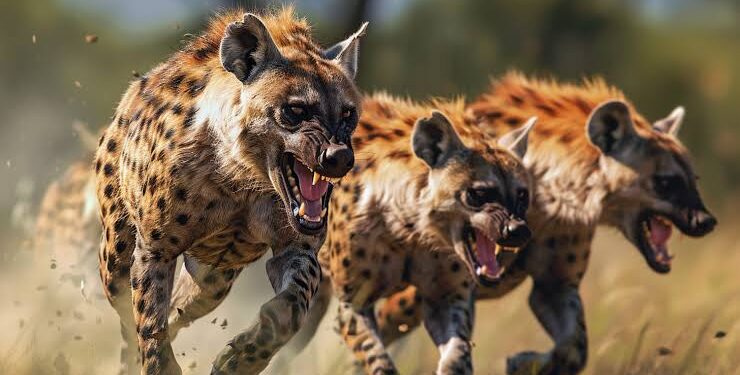By Emmanuel Nduka
Two people were injured on Monday night after a hyena attacked them in Oloserian village, Ildamat, Kajiado County.
The victims, a man and a woman, were walking home from the market when the animal struck. Three dogs that tried to fend off the hyena were also injured. Angry residents later killed the animal.
Area Senior Chief Lawrence Kelian said, “We received information that a hyena had been spotted within, but before we could pass the same information to the Kenya Wildlife Service personnel, the incident had already happened.” He urged locals to remain vigilant to prevent further attacks.
Residents expressed frustration over what they described as delayed responses by the Kenya Wildlife Service (KWS) and called for faster compensation for victims of wildlife attacks.
“This is not the first time to be attacked by animals, we wonder why the officers always come late,” said John ole Nagula.
Mary Nanai added, “As we talk, two of our people are in the hospital, we don’t even have money to pay for their hospital bills, what is the government doing to protect us from these attacks?”
Kenyans Reconsider Coexisting
Another resident, Joyce Nashipae, said the community may be forced to reconsider coexisting with wildlife. “We have suffered and been treated as second-class citizens by KWS officers and we can’t tolerate it any more,” she said.
Hyena attacks on people in Africa are uncommon compared with attacks by some other large carnivores, but when they occur they can be sudden, severe and socially disruptive.
Most documented incidents involve spotted hyenas (Crocuta crocuta), which are behaviourally flexible and often live at the edges of human settlements where they scavenge for food.
Case reports and surgical literature describe catastrophic injuries from occasional maulings, and conservation and ecological studies show that spotted hyenas will exploit human refuse, livestock carcasses and other easy food sources, bringing them into nightly proximity with people and domestic animals.
Recent medical case reports and investigations highlight both isolated but brutal individual attacks and periodic clusters of incidents in East Africa.
Researchers and wildlife managers point to a small set of recurring drivers behind increases in human–hyena conflict. They include habitat loss and shrinking wild prey, improper disposal of livestock carcasses and urban waste, abandoned quarries or other features that create denning sites, disease outbreaks (notably rabies) that can alter hyena behaviour, and broader social disruption (including war) that changes scavenging opportunities.
These factors both increase the frequency hyenas visit villages and raise the likelihood that they will attack vulnerable people (sleeping or isolated individuals, children) or livestock, which then fuels retaliatory killings and persecution of hyenas.
Socio-economic studies also document the heavy toll on affected communities: medical costs, loss of livestock, fear and pressures to abandon traditional coexistence practices, all of which complicate conservation responses.


































